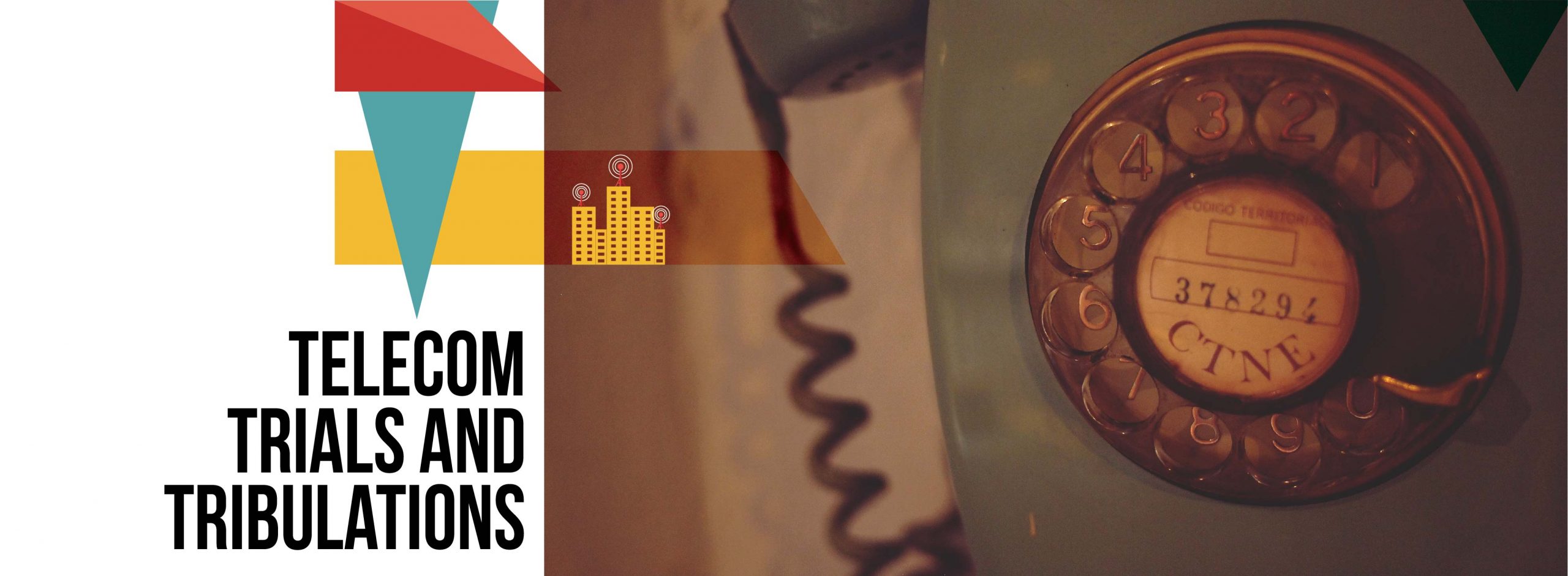By M. Rokonuzzaman, Ph.d
Once Bangladesh’s Telecom sector used to be the state monopoly. In 1980s, The Bangladesh Telegraph and Telephone Board (BTTB) used to be exclusively responsible for providing vertically integrated telecom services starting from international connectivity to end-user level connection. In association with sister organizations like Telephone Shilpa Sangstha, BTTB was also involved in producing telecom equipment such as exchanges, cables, and handsets.

Telecommunication is a bit different from all other industries; as the network keeps growing, cost starts falling and perceived utility of the product starts increasing. As a result, both the consumers and producers have the incentive to let a big operator become bigger. Such a characteristic can be identified as a natural tendency of a monopoly. Apparently, monopolies appear to be cheapest source for Telecommunication services. In the case of monopolies, how will the price be determined? The common practice is to use the regulation based on cost modeling. Cost modeling based price regulation had been the means of governance of telecommunication across the globe for the better part of the 20th century. By the 1970s, most of the advanced nations had acquired almost 100% teledensity. On the other hand, in developing nations, the teledensity was as low as less than 1%. In Bangladesh, there were less than 1 million telephone lines serving more than 140 million people by the middle of 1990s. Moreover, the cost of telecommunications in developing countries was also high, primarily due to having a very small network size serving only a small fraction of potential customers.

In developing countries, the capital, primarily provided by the Government, was the limitation for the expansion of the telecom network. On the other hand, in the advanced nations, the cost modeling based price regulation was facing insurmountable barriers. Particularly, the regulators of the United States of America were puzzled about how they could reduce the long distance telecom rates charged by AT&T. As there is no incentive for the operator to reveal actual cost structures to the regulators, there was always an information and trust gap. Due to information asymmetry, the cost modeling based approach was failing to provide the necessary clues to the regulators regarding how to reduce the prices. Moreover, as a monopoly makes healthy and certain profits it forgoes the risk of investing in innovative ways to provide better products at lower prices. Monopolies have another major limitation: the profit maximization strategy. A private monopoly usually pursues the demand led market expansion to maximize profits. As a result, the monopoly will produce far less than the socially optimal quantity. This is because increasing production beyond the point at which profit is maximum will lead to an additional income from the marginal increase in production which will be less than the infra-marginal loss, as price should be reduced to sell marginal output. Particularly, such issues have been critical for developing nations as the markets were very price sensitive.

To address these three major monopolistic limitations, it was decided to explore the option of introducing competition in the telecom sector. In Bangladesh, to benefit from competition, the telecom industry has been segmented into 7 major sections over the decades, starting from international connectivity to value added service delivery. In the same industry where BTTB used to be the only operator, we now have more than 200 operators operating in different segments of the industry. However, the multi-operator based service delivery runs the risk of increasing costs as due to the fragmentation of the market (and consequentially the network) benefit from both economies of scale and scope will be reduced. Due to the redundancy of the network, a significant amount of capacity will remain unused leading to a less than optimal cost structure. In developing nations, the mobilization of private capital was the primary argument for opening the telecommunications market to competition. The policy challenge of benefitting from multi-operator based competitive telecom markets was to decide about the optimum level in diverse dimensions, including the number of operators, the level of segmentation and the boundary of the industry.
With the adoption of policy of market based reform, many international consultancies started proposing the argument to global investors to rack money by investing in the Telecom sector in the developing nations. Particularly, the cellular technology accentuated such proposition of easy profit making. With the interest of international investors, the regulators in these countries got into the frenzy of segmenting the network into as many pieces as conceivable and issuing licenses to maximize the licensing fees. As a result, there has been significant resource underutilization leading to much higher cost of delivery than it should have been. In this craze of supply led market expansion, in most countries only one or two operators reached profitable positions leaving dozens to incur losses. Bangladesh is no exception to this phenomenon. These profit making operators, mostly dominant ones, are setting the price to make healthy profits, while forcing others to take lower prices to keep incurring losses. Across the world, the proposal of mergers and acquisitions is mounting. In Bangladesh, the mobile segment has already experienced exits or mergers of operators. Regulators appear to be bewildered as the market is moving towards a monopolistic setting once again. Even the European Union has put moratorium on such proposals. On the other hand, international consultancies are proposing to operators to expand their boundaries to encroach in the functionally specialized service market in the name of mobile service such as m-health or m-finance. Such expansion runs the risk of creating serious anomalies in the market structure causing significant losses for the consumers.
Nobody appears to have a clue regarding how to decide the optimum level of segmentation, number of operators in each of these segments, and the boundary of the industry. It appears that regulators, operators and international consultancies are all in a race in creating serious disarray in the telecom market in the name of market led reform. It’s time to rethink and conceptualize the solution to engineer discipline to benefit from sustainable competition to offer better products at lower cost for increasing both consumer and producer surpluses simultaneously.
Despite the phenomenal growth of teledensity from less than 1% to more than 70% in less than two decades, there appears to be growing policy challenges to govern the industry in Bangladesh. Here is a list of policy issues that Bangladesh should carefully take into consideration to maximize the consumer benefit by taking the advantage from competition:
• The democratization of smartphone ownership and ubiquitous availability of wireless broadband services and many conventional services like financial, health and education who are poised to benefit from digitization. Should Bangladesh adopt the policy for allowing mobile operators to be e-service providers?
• Although the wholesale price of Internet bandwidth has fallen from Tk 72,000 in 2006 to Tk 625 in 2014, why are users not benefiting from proportionate decrease in bandwidth price is a policy challenge.
• Although the telecom sector has been the source of almost $3 billion revenue, many of the mobile operators and ISPs are struggling to reach profits. How to create possibilities of profitable competition for these operators is a policy challenge.
• With the technological progression, voice and video call over the Internet is becoming cheaper. To protect the voice revenue for the operators, should policy makers create barriers forcing consumers to use conventional expensive means for making international calls?
• Should the Government increase investment to compete with private operators by laying redundant infrastructure, or focus on investing to address market failure to intensify competition?
It’s time for policy makers and the regulator to govern the telecom industry to maximize consumer surplus by creating possibilities of profitable competition to maximize the leverage from innovation, scale and scope advantages.
















